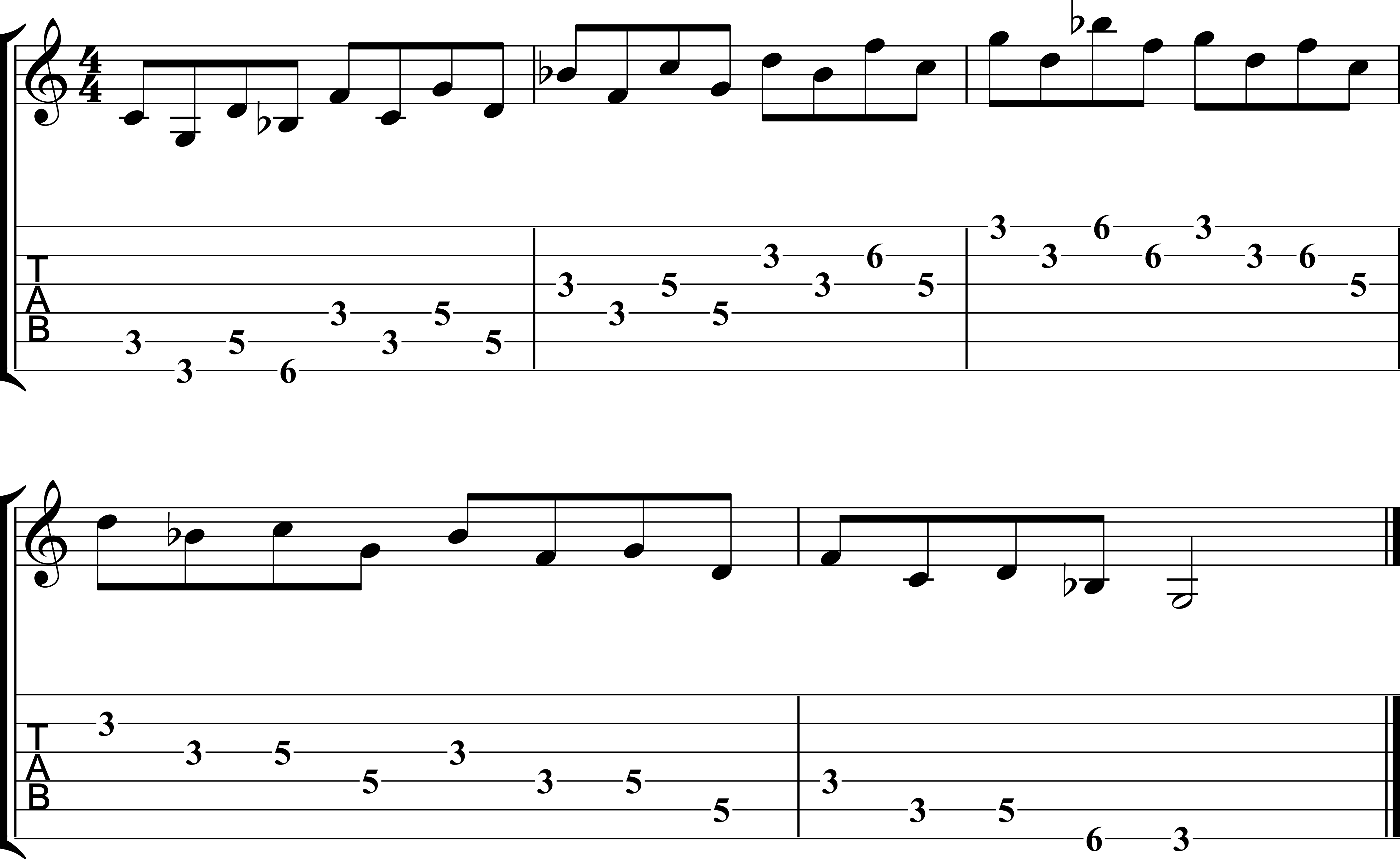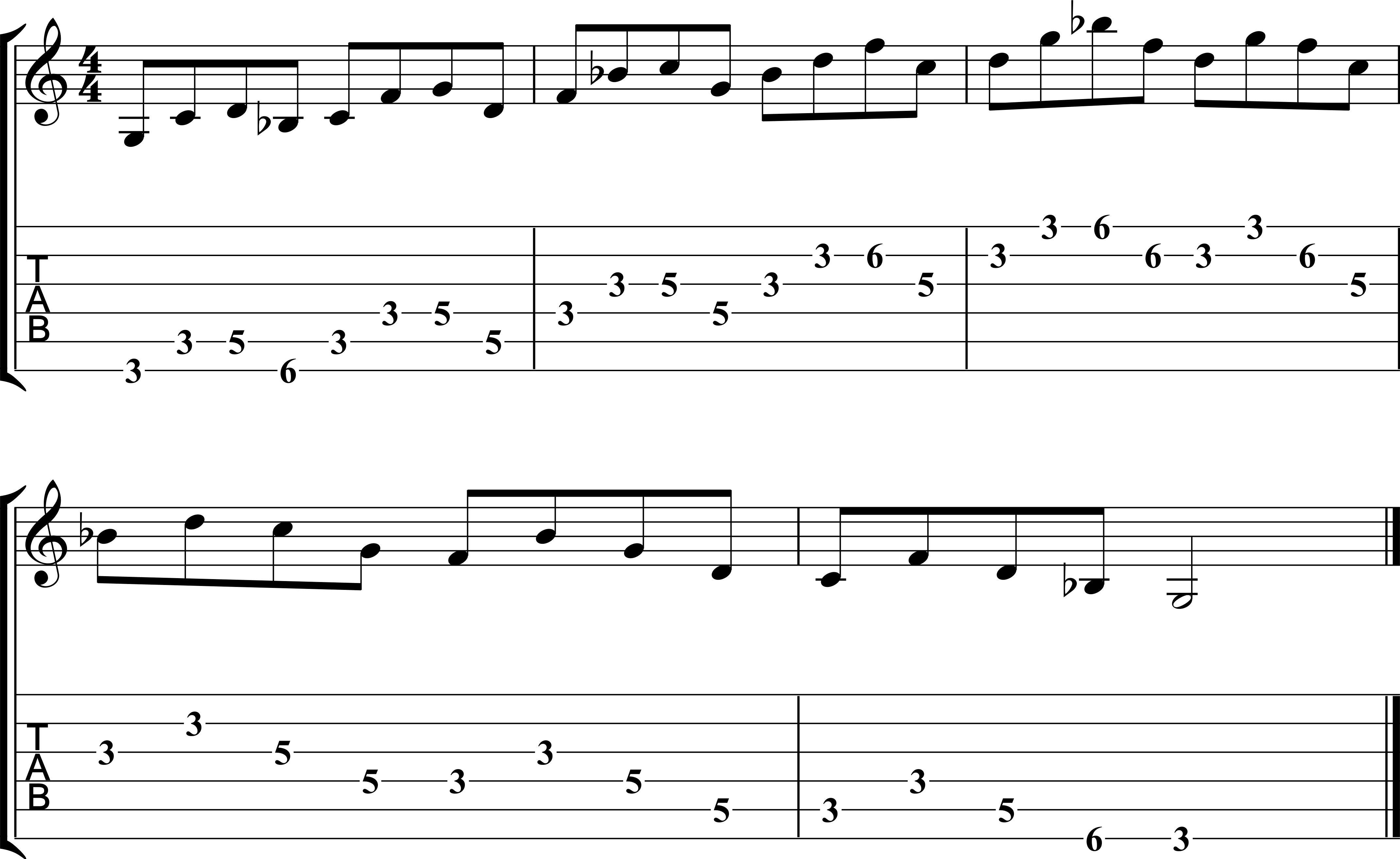Easy Guitar Scales - Pentatonic Soloing Guide
Guitarists love to play pentatonic scales. They’re usually the first scale you learn, they’re easy to play, and they sound great in your solos.
What’s not to love about pentatonic scales?
But, while we love to play pentatonic scales, there comes a time where our normal patterns and lines fall flat, so we look for something new to inspire us.
Most players will turn to new scales and modes at this point, learning new shapes and sounds and leaving the pentatonic scale behind in their solos.
While it is important to continue your development as a soloist, you don’t have to scrap the pentatonic to do so.
Instead of moving on to new scales and modes, you can add in diatonic and chromatic patterns to pentatonics in your solos.
Doing so allows you to sound fresh and new with your old pentatonic boxes, and you have a lot more fun soloing with these new avenues of exploration.
In this lesson, you learn how to play a pentatonic scale, how to add 4 scale patterns to that shape, and how to add sidestepping to your solos.
All of these add up to skyrocket your pentatonic lines and phrases to new heights of creativity and imagination in your playing.
Have fun digging deep into the pentatonic scale as you discover myriad new possibilities for box pattern 1 in your improvisations.
4 Pentatonic Scale Patterns
The first pentatonic scale workout applies 4 essential patterns to the box pattern 1 you reviewed or learned above.
As you apply this pattern to the pentatonic scale make sure to work it with both a metronome and in your solos over the backing tracks.
You can also take any of these 4 patterns further by adding them to any pentatonic scale shape you know, with a metronome and in your solos.
Have fun as you build your technique, learn the pentatonic scale inside and out, and skyrocket your soloing chops with these 4 patterns.

To begin your pentatonic scale pattern workout, you work the pattern up each string set in the scale.
Learn the pattern on your own to get it under your fingers and into your ears.
From there, add a slow metronome as you add tempo to this workout.
Lastly, add this pattern to your solos over the Gm backing track, along with the scale and your own lines in your soloing.
Have fun learning this first pattern as you expand your chops and add new material to your soloing lines with this pattern.
Before you dive into the exercises below, here’s the Gm pentatonic scale that you use in this lesson to get you started.
Review or learn this scale to begin, then head to the first scale pattern below when you have this scale shape memorized.
Audio Example 3.1
Gm7 Backing Track

You’re now ready to reverse the previous pattern as you now play down each string set over the scale.
Go very slow with this pattern so you don’t fall back to the previous pattern you just learned in your workout.
Sing along, use a metronome, and add this pattern to your solos over the backing track when ready to get a full workout with this scale line.
Audio Example 3.2
Gm7 Backing Track

With this 3rd pentatonic pattern, you combine the up and down versions you just learned to alternate over the scale.
Start slow with this pattern, sing along if you can, and use a metronome to nail the timing with this exercise.
When ready, add this pattern to your solos over the backing track to get a full workout with this diatonic pentatonic scale pattern.
Audio Example 3.3
Gm7 Backing Track

You now reverse the previous pattern as you work down then up the Gm pentatonic scale in your workout.
After you can play this pattern with a metronome, add it to your soloing over the Gm backing track.
Go slow, sing along if possible, and have fun learning this pattern to build your chops and increase your soloing vocabulary over m7 chords.
Audio Example 3.4
Gm7 Backing Track

Pentatonic Scale Pattern Soloing Workout
Whew, that was a ton of work, hopefully, fun work, to get those pentatonic patterns down.
You’ve probably worked up quite a sweat, so now it’s time for a fun “palate cleanser” exercise where you let your hair down in your studies.
Below are 3 backing tracks, your goal is to solo over each one using the related minor pentatonic scale and any patterns you just learned above.
There are no rules or really any goals besides solo, experiment, take chances, make mistakes, and go for it over the backing tracks.
Have fun with this soloing workout as you solidify the scale patterns you just learned and prepare yourself for the sidestepping lines to come.
Gm7 Backing Track
Em7 Backing Track
Bm7 Backing Track
Pentatonic Sidestepping Workout
You’re now ready to take things a step further by adding a chromatic bit of vocabulary to your pentatonic lines and solos.
Sidestepping is one of the most popular, and easiest, ways to add chromatic tension to your soloing.
Here, you solo over a chord, say Gm7, using the diatonic pentatonic scale, Gm pentatonic in this example.
Then, to sidestep, you go between Gm pent and Abm pent in your lines.
Abm pentatonic creates tension that you then resolve back into the diatonic Gm pentatonic chord.
As I said, it’s an easy concept for adding tension compared to other jazz concepts, but that doesn’t mean it’s easy in general.
It does take time, mostly to nail the resolutions back to Gm pentatonic, to get things sounding good when soloing with sidestepping.
As Stevie Ray Vaughan once said, “It’s easy to go outside, it’s much harder to get back inside.”
Check out this video, have fun with the soloing workouts, and enjoy the 3 lines below as you learn how to add pentatonic sidestepping to your soloing workout.
To get you started with sidestepping, here are three lines that use this essential jazz technique over m7 chords.
To begin, here’s a line over Gm7 that uses Gm and Abm pentatonic to sidestep over that chord.
Start by learning the line, then add pieces or the whole line to your solo over the track, alongside your own sidestepping phrases.
Have fun learning this line and adding sidestepping to your m7 solos with this exercise.
Audio Example 3.5
Gm7 Backing Track

The second sidestepping phrase uses rhythm and rests to break up the line and create interest in the phrase.
Play the line along with the audio example to nail the timing, and count along if needed, to get the most from this workout.
Have fun as you learn this phrase, add it to your solos, and solo over the Em7 backing track with the scale, sidestepping, and line.
Audio Example 3.6
Em7 Backing Track

Here’s the final sidestepping line that you can learn and add to your solos over any m7 chord.
Start by learning the line as written, playing it over a metronome and backing track in your studies.
When ready, solo over the Bm7 backing track and add parts or all of this line to your solos, as well as sidestepping lines you create on your own.
Have fun soloing with sidestepping and this phrase over the Bm7 backing track in your workout.
Audio Example 3.7
Bm7 Backing Track

